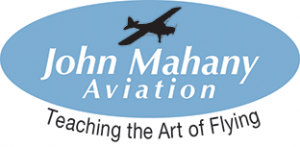Air Traffic Control Mike Fright
Do you have Air Traffic Control Mike Fright? Are you unsure about what to say, or how to talk to ATC?
Want to get over Air Traffic Control Mike Fright? You are not alone. Many are unsure of what to say.
As an experienced CFI (Certified Flight Instructor), I’ve seen this with students and heard it many times before. It can be intimidating, especially at busier airports where they issue clearances at a rapid-fire pace. I can help.
How to deal with Air Traffic Control Mike Fright
You have to know what to expect. Then, think BEFORE you ‘key’ the mike/push the ‘PTT’, “push-to-talk button”, and know WHAT you are going to say. Avoid long pauses (…ahh), which only tie up the frequency for everyone else.
Follow this simple formula:
- Who you are calling (facility or airport name), and the ‘controller’ position; Long Beach Ground, Tower, or Clearance, for example. Don’t just say ‘ground control’, or Long Beach Ground Control. That’s very amateurish.
- Who YOU are (aircraft make/model and ‘N’ number, i.e.; Cessna or Skyhawk 12345). In the US, you don’t have to include ‘November’ in a US registered aircraft. Only outside the US is that required.
- Where you are/your position (if in flight 10 miles north etc. or position on the ground, Transient ramp, FBO, etc.)
- Your intentions (what you want to do…reposition to parking, taxi for takeoff…takeoff/land, etc.)
Air Traffic Control will reply with your call sign and instructions on what to do, as appropriate, using their terminology. This is all referenced in the Aeronautical information Manual, (AIM for short) Chapter 4, Section 2, (4-2-1 thru 13)) Radio Communications Phraseology and Techniques. You reply by acknowledging and reading back your clearance, that you understand what you are expected to do, using appropriate terminology.
Here is an example.
You; “Fullerton Ground, Cessna 12345, Transient Parking, VFR West bound (direction of flight), Taxi with Alpha (ATIS code)”.
Fullerton Ground; “Cessna 12345, Fullerton Ground, taxi Runway 24 via Alpha.”
You, reading back; “Cessna 12345 taxi runway 24 via Alpha.”
The reason ATC talks fast is:
a. They might have several aircraft to communicate with, so they keep their transmissions short and to the point. Concise. Notice ATC also leaves out most ‘prepositions’; remember those from English class way back when…as they are extra words that take up time on a busy frequency. It makes a difference.
b. They give this clearance 100’s of times each day, to every pilot who calls for taxi clearance. They don’t have to think about it.
Suggestion: as stated above, before calling; note your position, either on the ground or in flight. Where are you and what are your intentions? Now you know what to expect from ATC. Then, using shorthand, either write down the important elements of your clearance on a pad of paper, OR if using an iPad with ForeFlight, and maybe an Apple Pencil, you can draw it on the airport diagram using the highlighter feature on the app. That way you have a record of your clearance.
Any questions or thoughts about this? It’s standard phraseology. It works anywhere. The AIM also spells out radio use at non-towered airports. This can be found in the AIM in section 4-1-9.
What has stumped YOU with using the radio? Or is there any particular airport or ATC facility that you find intimidating? Let me know. I can help.
Fly safely!
John




How about managing ATC at LGB given all the different levels of traffic?
What do you have in mind? It’s already quite well managed, and yes there is a unique mix of air traffic, airline, military, corporate ‘iron’, GA transient and training, and more, including helicopter and blimp traffic, that most tower controlled airports do not have. So, how to manage it better? 🙂